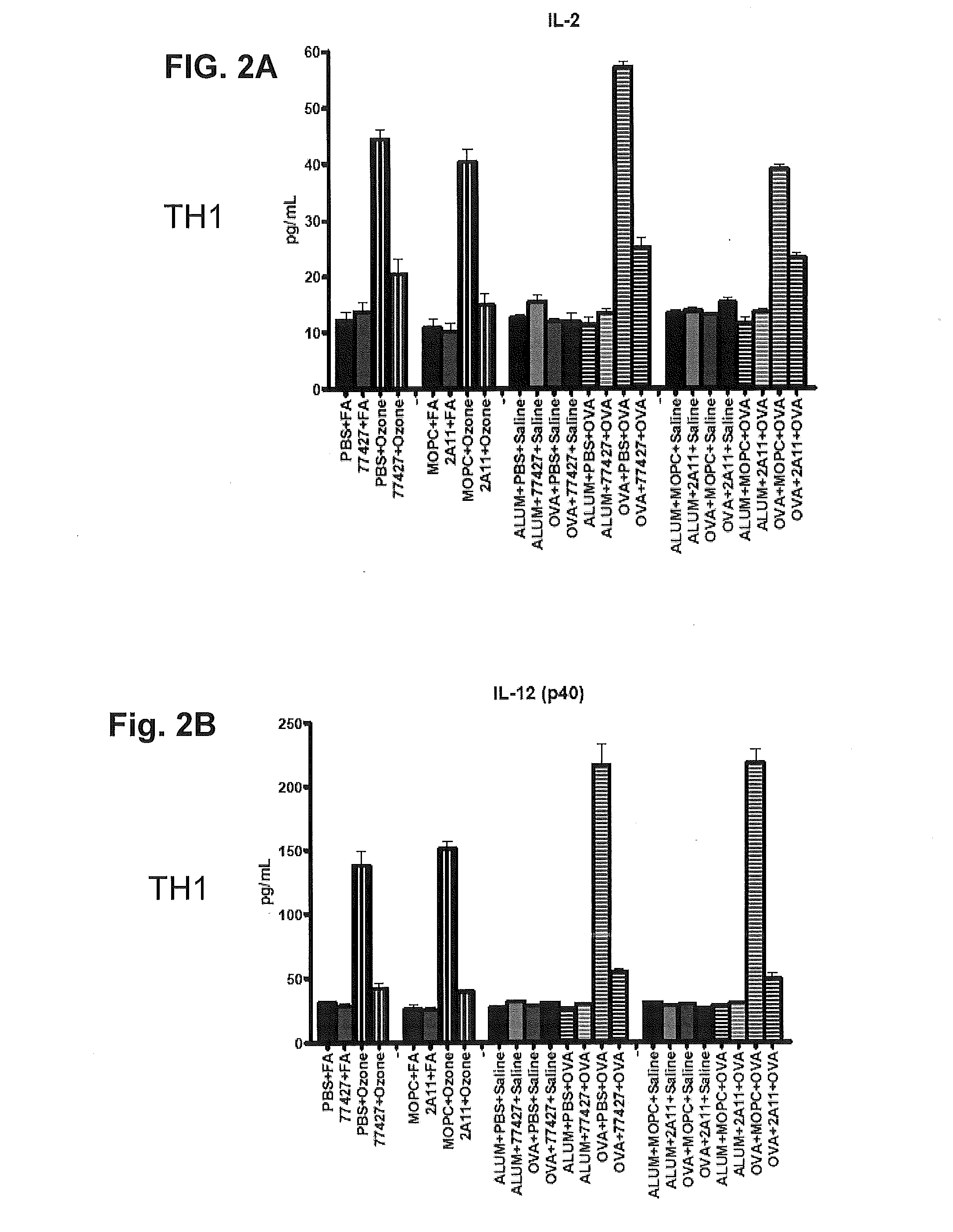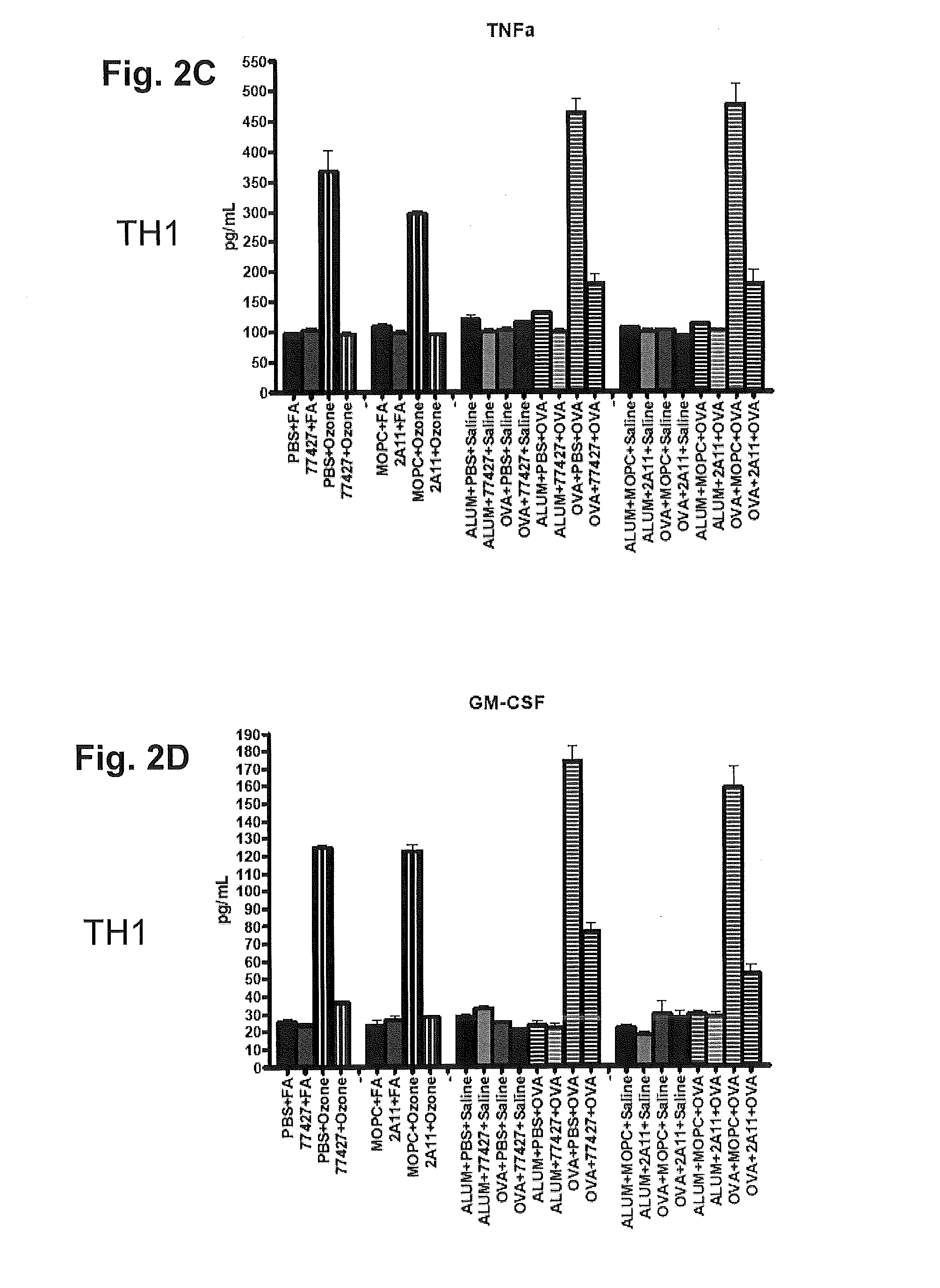Methods of treating lung disease and other inflammatory diseases
a technology of lung disease and other inflammatory diseases, applied in the field of methods of treating airway diseases and conditions, can solve problems such as modest changes
- Summary
- Abstract
- Description
- Claims
- Application Information
AI Technical Summary
Benefits of technology
Problems solved by technology
Method used
Image
Examples
example 1
[0067]Without wishing to be bound by any particular theory of the invention, the central hypothesis of this invention, as currently understood, is that GRP overproduction by PNECs plays a role in the pathophysiology of both acute and chronic phases of asthma, as well as other inflammatory lung diseases including bronchiolitis and interstitial fibrosis. This hypothesis is supported by cumulative observations, which are presented below.
[0068]We demonstrated that GRP gene expression is increased in the lung 24 hours after birth in the most clinically relevant baboon model of chronic lung disease of newborns (also called bronchopulmonary dysplasia, or BPD)2-4. GRP and its amphibian homologue bombesin are potent, immediate bronchoconstrictors in vitro5,6. The presence of GRP in the lung was not reported until 19787. PNEC hyperplasia was observed in guinea pigs given systemic antigen sensitization, in which PNEC degranulation follows aerosol challenge8. To date, there are no reports of PN...
examples
[0085]We have carried out experiments with GRP blockade given as an intraperitoneal (IP) injection to prevent and / or treat AHR in several different mouse models of airways hyperreactivity (AHR) and / or inflammation: ozone-induced AHR as a model for asthma precipitated by air pollution, ovalbumin (OVA)-induced AHR as a model of allergic airways inflammation, and endotoxin (lipopolysaccharide, LPS)-induced AHR as a first step towards assessing infectious causes of asthma. These experiments used the small molecule GRP inhibitor, 77427, or a monoclonal anti-GRP blocking antibody, 2A 11. The invention would extend to any compound able to block GRP signaling by either binding to GRP itself or to the GRP receptor, which are part of the same signal transduction cascade. In the near future, we hope to test GRP blockade in additional mouse models of asthma, including: Mycoplasma infection, respiratory syncytial virus (RSV) infection, Aspergillus infection, and house dust mite exposure.
[0086]We...
example
Cytokines Suppressed in Mouse Models of Asthma
[0087]Using 2 in vivo mouse models of asthma, to ozone (air pollution) or ovalbumin (allergic airways inflammation), we have demonstrated that 77427 significantly suppresses (P<0.0001) or abrogates the increased levels of 21 of 21 cytokines tested, which represent at least 5 different inflammatory cell types. These cytokines and cell types are summarized as shown in FIG. 1.
[0088]Additional details of cytokines decreased by 77427 are given in the FIGS. 2A-2L. With regards to airways inflammation, in both the ozone and OVA models 77427 abrogates both airways inflammation and airway hyperreactivity (AHR). As a specificity control, the GRP blocking antibody 2A11 was used, giving the same results as 77427. In contrast, mice were treated with dexamethasone (Dex), the standard of care for asthma, before ozone exposure. Dex did not alter AHR or airways inflammation, and significantly suppressed only 4 of 21 cytokines (IL-9, IL-17, VEGF, RANTES)....
PUM
| Property | Measurement | Unit |
|---|---|---|
| Pharmaceutically acceptable | aaaaa | aaaaa |
Abstract
Description
Claims
Application Information
 Login to View More
Login to View More - R&D
- Intellectual Property
- Life Sciences
- Materials
- Tech Scout
- Unparalleled Data Quality
- Higher Quality Content
- 60% Fewer Hallucinations
Browse by: Latest US Patents, China's latest patents, Technical Efficacy Thesaurus, Application Domain, Technology Topic, Popular Technical Reports.
© 2025 PatSnap. All rights reserved.Legal|Privacy policy|Modern Slavery Act Transparency Statement|Sitemap|About US| Contact US: help@patsnap.com



